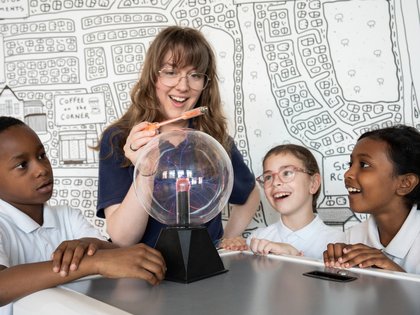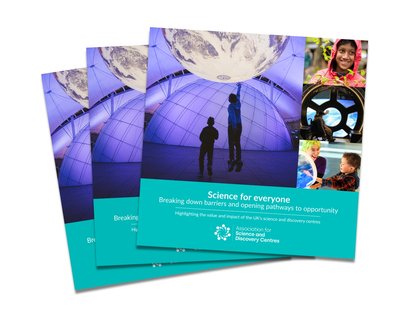Science Centres For Our Future
Science, innovation and technology are central to the UK’s national strategy, so why are the spaces that inspire the scientists, engineers and citizens for the future excluded from funding? #ScienceCentresForOurFuture
From Aberdeen Science Centre to the Eden Project, last year more than 5.2 million people explored science, technology, engineering and innovation at their local science and discovery centre. 55% of these visitors identified as women and girls. Our national network of interactive centres enable children, families and communities across the UK to play, be curious and question the relevance and benefits of science and technology for everyday life - and for the future.
But did you know that the UK’s science and discovery centres are largely excluded from the public funds that support similar organisations?
The Science Centres For Our Future campaign is seeking to change this. We have written an open letter, calling on the Government to recognise science and discovery centres as part of the UK’s scientific and cultural ecosystem, and provide funding for the sector’s infrastructure needs. If you'd still like to show your support for science and discovery centres across the UK, please get in touch by emailing admin@sciencecentres.org.uk.
Forging a better future for the UK through science and technology
Supporting the delivery of our national priorities
Science and discovery centres are located in towns, cities and rural areas outside London including Glasgow, Cardiff, Bristol, Belfast, Newcastle, Leicester, Wrexham, St. Austell, Aberdeen, Halifax and Hull. These centres have become trusted anchor institutions in their local communities, recognised as local hubs of STEM expertise working closely with local schools, academic, business and industry partners to engage all ages with science and technology.
“Across political parties we recognise the importance of the public’s relationship with science in the UK, not just as the cornerstone of our economy, but to successfully navigate topics like climate change, artificial intelligence, and pandemics. Places such as We The Curious are now more important than ever as trusted, objective, and accessible places where science and society meet.”
Carla Denyer, MP for Bristol Central
Key partners in science education across the UK
The network of science and discovery centres are an embedded part of the educational ecosystem. Over the last two years, the science and discovery centres mapped below have worked with >37% of all UK schools, supporting curriculum science concepts, science inquiry and STEM skills, for pupils and teachers across 96% (624 out of 650) of all Parliamentary constituencies across the UK.
“Hands-on science centres are an important resource underpinning lifelong learning. Learning by doing - learning through personal discovery - is so powerful. These centres are highly valued by schools, providing a tangible way to engage with science and technology. They are highly valued by universities - partnering with these centres for public engagement with research. They are highly valued by the thousands of families who attend them, learning about scientific theory in practice, but also about technological and ethical challenges facing us as a society. They are an important part of our culture in the UK, and need supporting as such."
Alice Roberts, Anatomist & anthropologist, author & broadcaster, Professor of Public Engagement in Science, University of Birmingham
Making science accessible to all
Equitable and inclusive STEM education and engagement is not a ‘nice to have’ but an economic and societal imperative, fundamental if we are ever to achieve greater diversity in STEM. All centres provide discounted tickets to support access and participation, with more than 450,000 people visiting centres completely free of charge every year (data taken from ASDC sector survey reports, collected Spring 2024 & 2025).
“Greater support for organisations and educators in the informal science learning sector is urgent and necessary if we are going to change the field to realise more equitable youth outcomes.”
Professor Louise Archer, Chair of Sociology of Education, University College London



